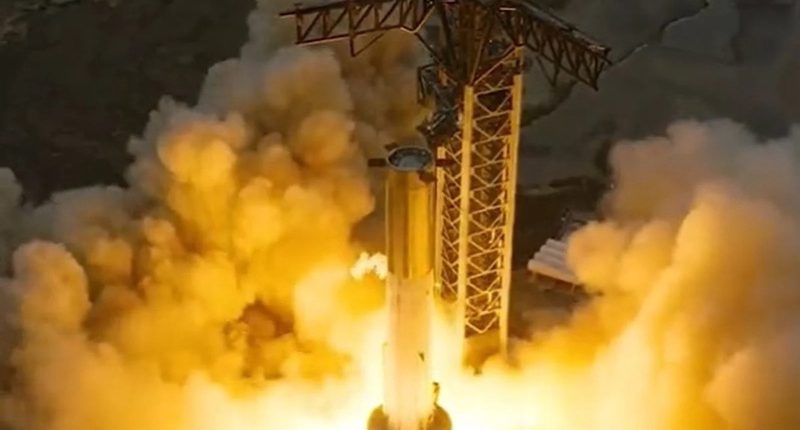The debut orbital flight of SpaceX’s gargantuan Booster 7 is yet to come, but from the looks of it, Elon Musk’s space company is surely moving in the right direction. The booster roared to life with a test fire on Thursday as SPaceX tested 31 of 33 Raptor rocket engines. The engines fired for roughly 10 seconds at SpaceX’s Starbase facility in South Texas.
Views from drone of Booster 7's static fire test pic.twitter.com/KN4sk1nohf
— SpaceX (@SpaceX) February 9, 2023
This comes as the company continues to work towards the upcoming launch of its Starship rocket to the orbit for the first time. The successful “static fire” of Booster 7 marked the overcoming of the latest obstacle by SpaceX before the nearly 400-foot-tall rocket takes to the skies (and beyond). “Team turned off 1 engine just before start & 1 stopped itself, so 31 engines fired overall. But still, enough engines to reach orbit!” Musk informed on Twitter just after the test wrapped up. The static fire lasted for about seven seconds, after which it returned back in one piece (which is a win for SpaceX).
This development comes after the failed testing of the Super Heavy booster back in July 2022. At that time, the test firing ended with the vehicle’s engine section exploding in flames. Prior to that, SpaceX test-launched Starship’s top half in several “hop” flights to an altitude of roughly 6 miles. The successful test-firing seems to have set a new record for the most thrust ever produced by a single rocket – roughly 17 million pounds, which exceeds the 10.5 million pounds for the Russian N1 and 8 million pounds for NASA’s Space Launch System (SLS) rocket, according to NASA Spaceflight said. They said it also marked the most rocket engines ever fired simultaneously, and that Super Heavy’s 33 engines will surpass the thrust from the first stage of the Saturn V.
Team turned off 1 engine just before start & 1 stopped itself, so 31 engines fired overall.
But still enough engines to reach orbit! https://t.co/QYx3oVM4Gw
— Elon Musk (@elonmusk) February 9, 2023
It is unclear whether SpaceX will consider another static fire test wherein it will fire all 33 Raptor engines, especially since the company is gearing up for the debut orbital launch of the Starship rocket next month. SpaceX President Gwynne Shotwell told a conference that the launch, a test mission lifting off from Texas and landing off the coast of Hawaii, could happen “in the next month or so.” “Keep in mind, this first one is really a test flight,” Shotwell added. “The real goal is to not blow up the launch pad, that is a success.”
When teamed up with the upper-stage Starship spacecraft, the entire vehicle will form SpaceX’s (and by extension, Musk’s) lynchpin to the colonization of Mars and the beginning of humanity’s next chapter in spacefaring history. The company has been betting big on the rocket, and NASA aims to use it to send the first batch of astronauts to the moon since 1972 under its Artemis program.
